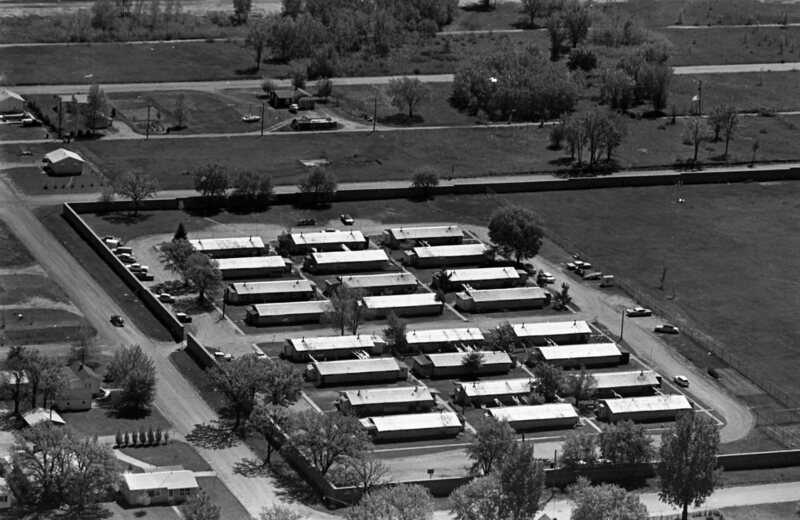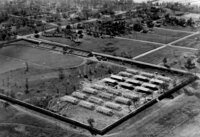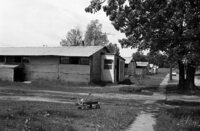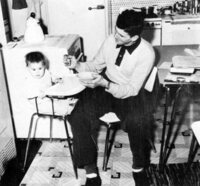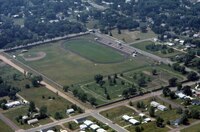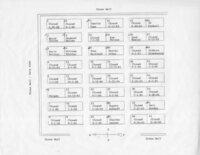Veterans Housing Complex (1947)
With the end of World War II in August 1945, social change began to sweep across the country. One major change was the accessibility of higher education. Thanks to the GI Bill, veterans could receive a college education paid for by the federal government.
Construction and Opening
Like other campuses across the country, the influx of veterans taxed St. Cloud State. These veterans, many who were married and had children, needed on-campus housing to live while receiving an education. In response, St. Cloud State provided housing at the north end of the enclosed Selke Field. Opened in stages in February and March 1947, 24 buildings, which each measured 20 feet by 54 feet, housed two units for student veterans and their family, totaling 48 units. Entrance was possible through the gate in Selke Field’s north wall with driveways and sidewalks laid out by St. Cloud State. The complex was intended to last only five years – yet continued on long afterwards.
According to the 1948 Talahi yearbook, each unit was furnished with ice boxes, stoves, and other permanent fixtures. Rent was $21 per month ($282 in 2025) and still the same in 1963. An April 30, 1957 Chronicle article further described each unit. Each had two bedrooms, a kitchen, a medium-sized living room, bathroom, pantry, and large closets. The family could decorate using paint and wallpaper provided by St. Cloud State.
Fertile Flats
The complex earned the nickname “Fertile Flats” due to the number of children living there, part of the large Baby Boomer generation. The community was self-governed, which included an elected mayor and a “city” council. The July 9, 1948 edition of The Chronicle reported that the first mayor, Charles Thomas, was elected in November 1947. Two aldermen were elected as well, and, later, expanded to six council members. The housing even had their own newspaper, The Fertile Tattler.
Eventually, the buildings were converted to married student housing with a priority to those with children.
Closure
In 1964, St. Cloud State, with approval from the state college board, began to gradually close the units “as they become uninhabitable”. By June 1968, the housing units, aged well beyond their intended lifetime, were finally closed. Just 15 units remained open. Those families still living there were informed they needed to leave. In 1969, the buildings were offered for sale as salvage and what remained was torn down.
